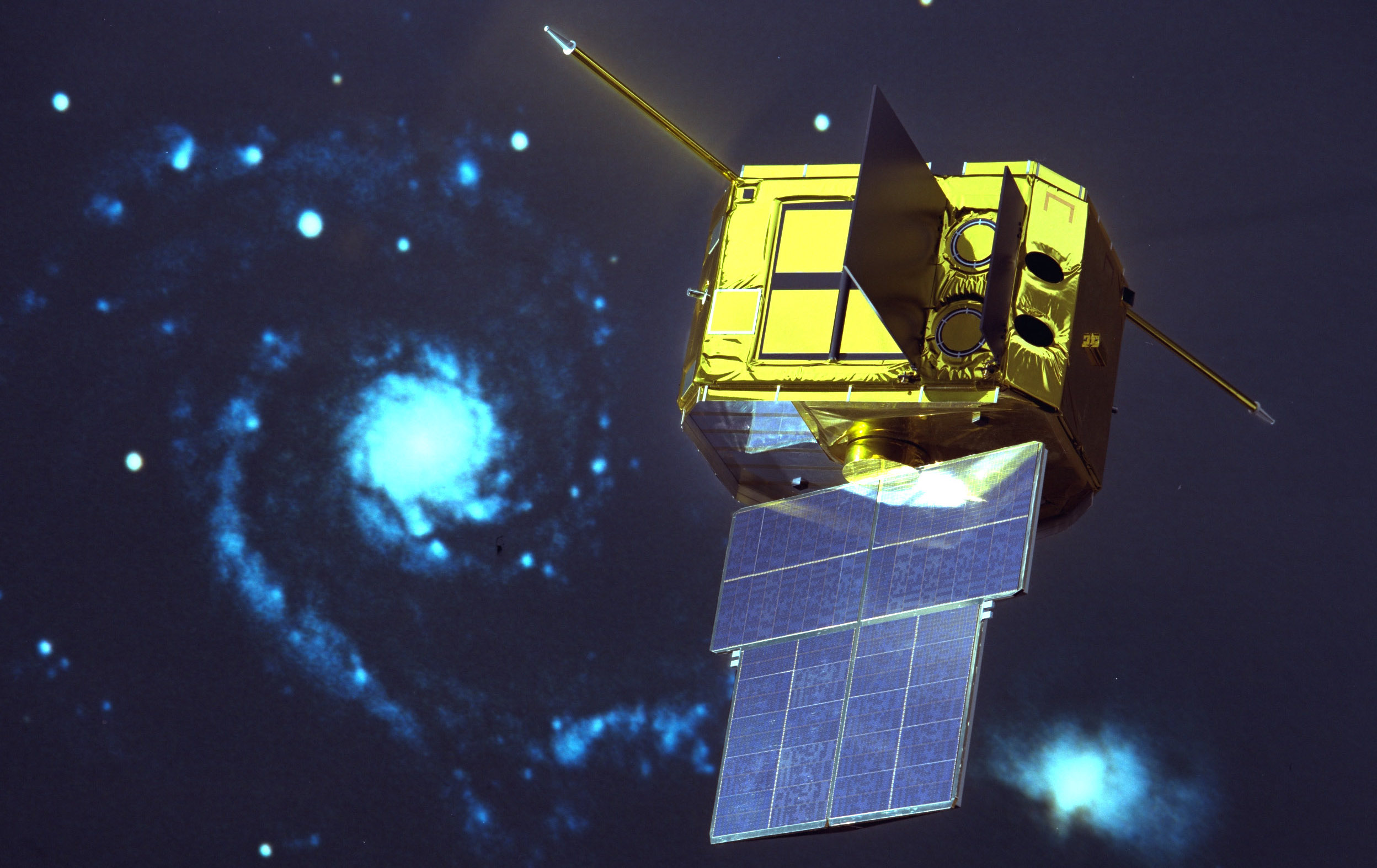
 Credit: ESA
Credit: ESA
Remembering EXOSAT
This spring marked an important milestone for the advance of X-ray astrophysics, the thirty-fifth anniversary of the European X-ray Satellite observatory, EXOSAT, launched May 26, 1983. EXOSAT was the European Space Agency's first space mission entirely devoted to the study of the X-ray sky, and provided X-ray images of cosmic high-energy sources (complementing advances made by the Einstein X-ray Observatory, a NASA X-ray satellite mission which flew the first X-ray imaging telescope). EXOSAT carried aboard two low-energy X-ray telescopes, along with two non-imaging instruments, the medium energy proportional counter and the gas scintillation proportional counter. During its 3-year lifetime, EXOSAT made 1780 observations and achieved a number of important discoveries. Most notable was probably the discovery of "quasi-periodic" X-ray oscillations in X-ray binary systems and X-ray pulsars, a phenomenon that has been used to probe material just outside the event horizons of black holes. EXOSAT also made many important observations of active galactic nuclei, stellar coronae, cataclysmic variables, white dwarfs, X-ray binaries, clusters of galaxies, and supernova remnants. The EXOSAT program also helped pioneer on-line access to space science data, and was the forerunner to modern astrophysical archives like NASA's HEASARC.
Published: June 25, 2018
<
HEA Dictionary ● Archive
● Search HEAPOW
● Other Languages
● HEAPOW on Facebook
● Download all Images
● Education ● HEAD
>

Each week the HEASARC
brings you new, exciting and beautiful images from X-ray and Gamma ray
astronomy. Check back each week and be sure to check out the HEAPOW archive!
Page Author: Dr. Michael F. Corcoran
Last modified Tuesday, 27-Feb-2024 10:13:24 EST


